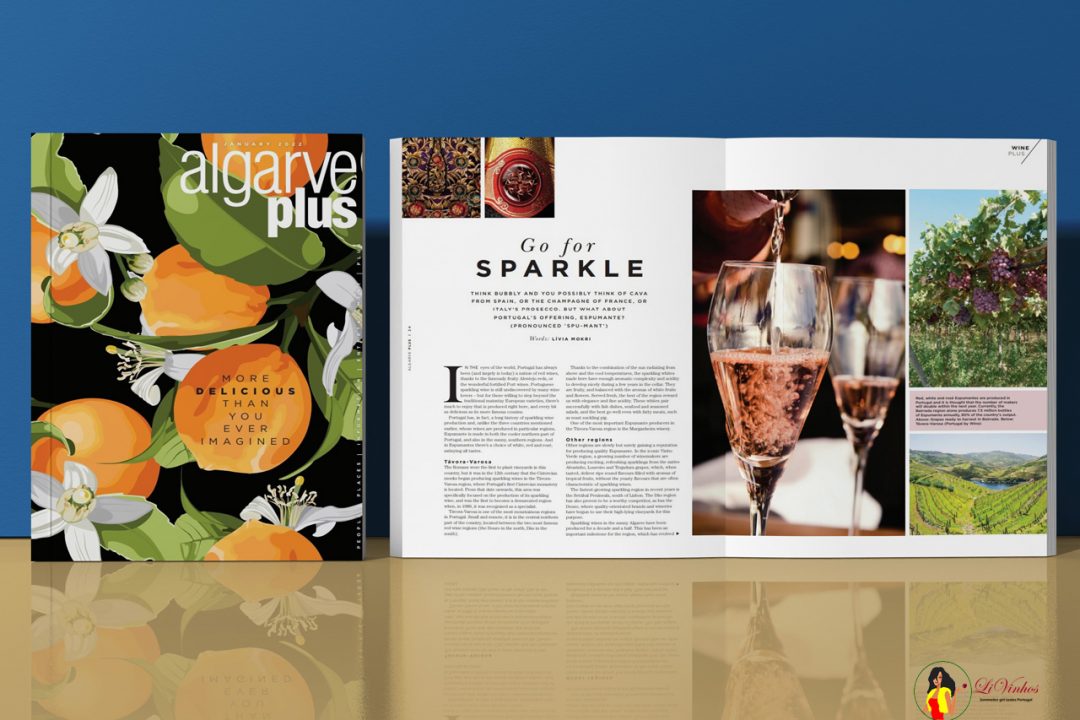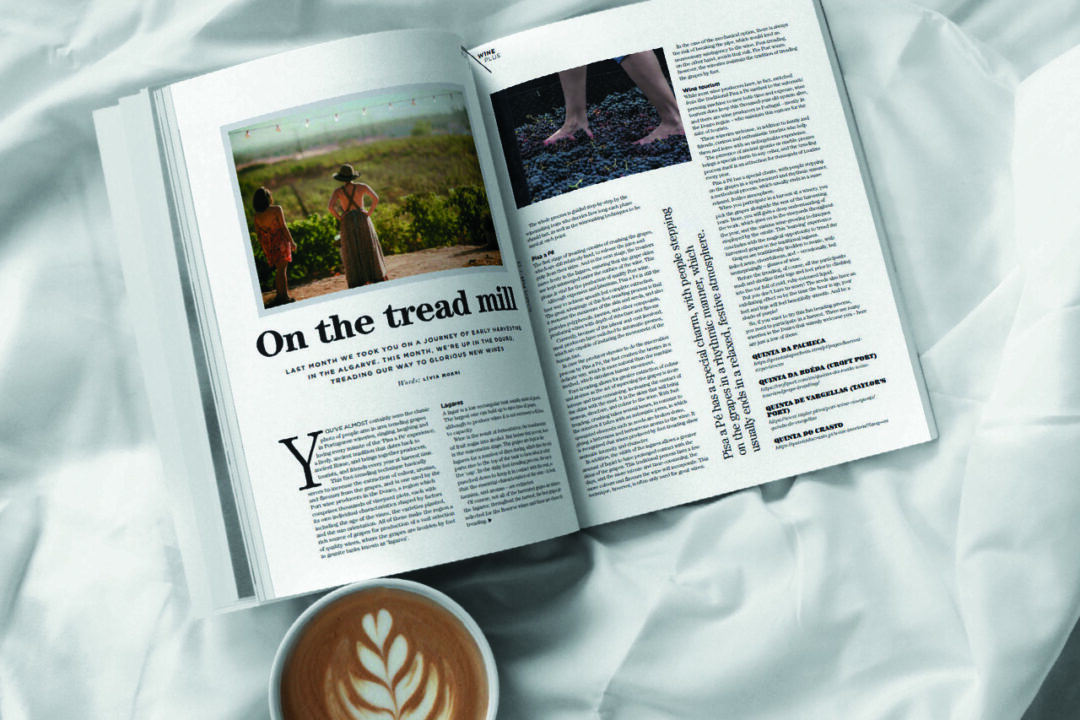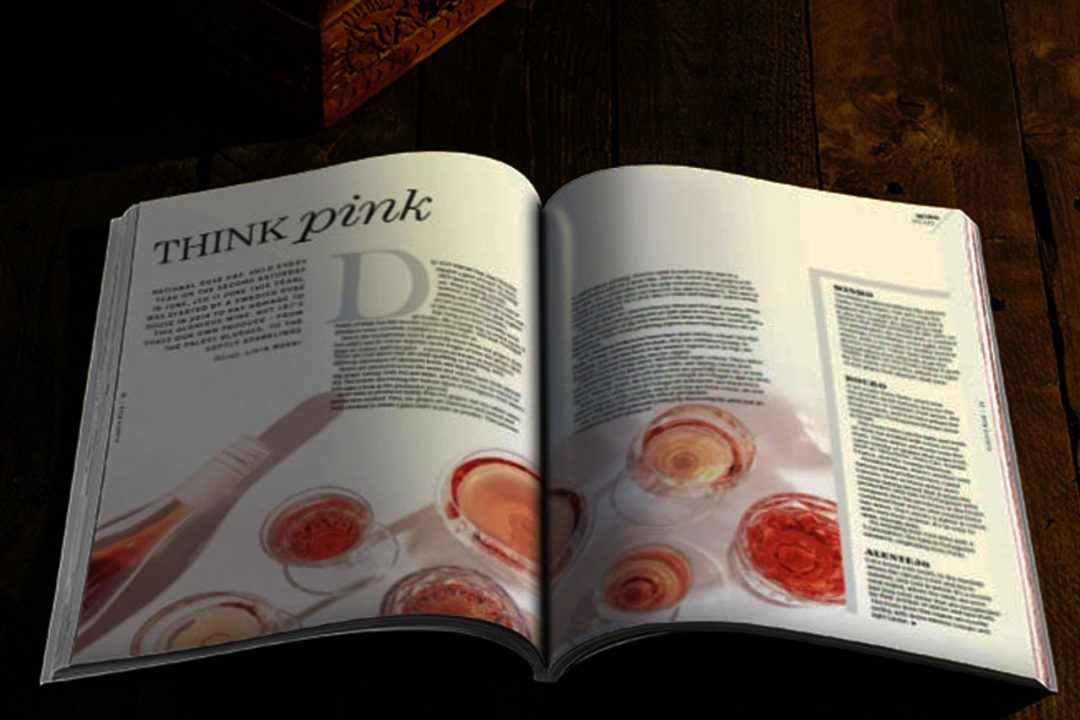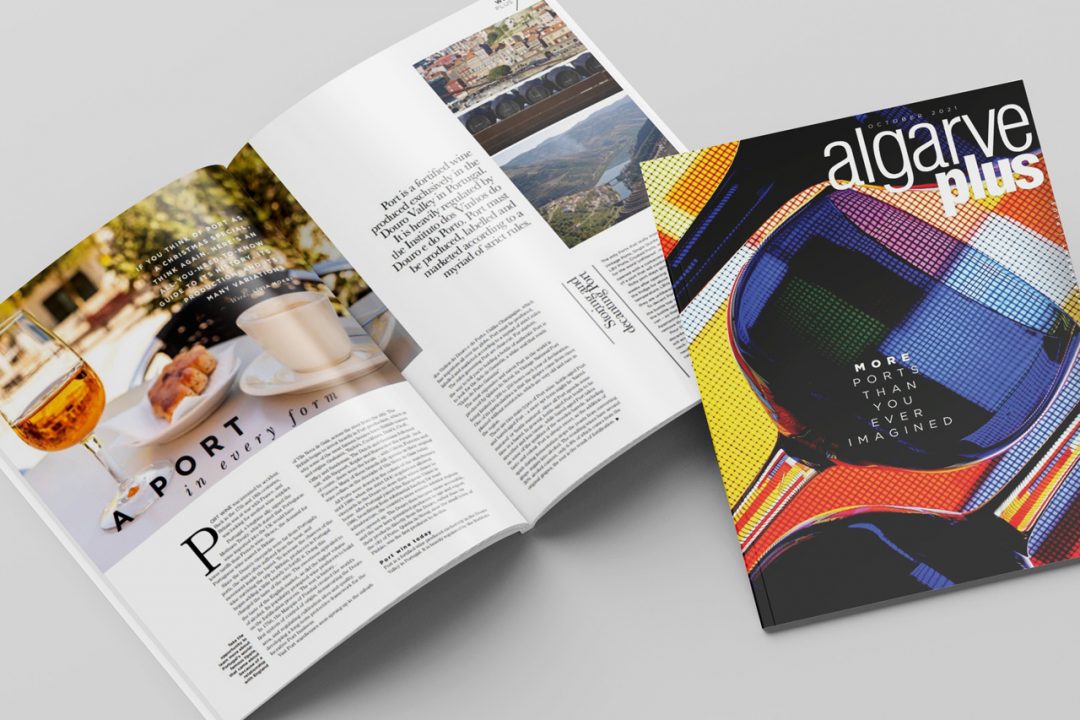Go for Sparkle – I’m almost certain you’ve all toasted any sparkling wines for the New Year. And possibly you drank Cava from Spain, Prosecco of Italy or France’s Champagne. But what about Espumante, the excellent sparkling wines of Portugal?
I am happy to share that my new article in the Algarve Plus Magazine has been already published!
The magazine is readable online or downloaded for free here.
Enjoy!
Or read here the whole article:
Go for Sparkle
There is probably no one who has not heard of the Cava, the famous sparklings of Spain, or the Champagne of France, or possibly the Italian Prosecco, which are made in a particular region of their country. But what about the high-quality sparkling wines produced in Portugal, which go well with otherwise for the country’s fantastic, varied cuisine as well?
Since we typically start the New Year with a toast with sparkling wines, let’s talk about the Portuguese version of sparklings, named Espumante (pronounced ’spu-mant’).
In the eyes of the world, Portugal has always been (and largely it is today) a nation of red wines, thanks to the famously fruity Alentejo reds, or the wonderful, fortified Port wines. The Portuguese sparkling wine is still an undiscovered category among wine lovers – but an even more exciting discovery for the sparkling fans who are willing to step beyond the mainstay Champagne-Cava-Prosecco!
Few know, but Portugal has a long tradition of making sparklings and, unlike the three champagne-producing countries mentioned earlier, Espumante is not only made exclusively in a particular region or cooler northern part of Portugal but even in so sunny, southern regions, as Algarve.
Quality sparklings are produced in the country, in white, red and rosé styles, for which Portuguese producers gained their knowledge in France, making them masters in the production of Espumante, today.
TÁVORA-VAROSA
The Romans were the first to plant vineyards in the country, but in the 12th century, the Cistercian monks began producing sparkling wines in the Távora-Varosa region, where also the country’s first Cistercian monastery is located. From that date onwards, this region was specifically focused on the production of this kind of drink. Thus, it is no coincidence that this region was the first to become a demarcated region specifically because of the sparkling wines, in 1989.
Távora-Varosa is one of the most mountainous regions in Portugal, a small, remote wine region in the central-northern part of the country. Although located between the two most famous red wine regions (the Douro in the north, Dão in the south), Távora-Varosa is best known for its white, dry sparklings.
Thanks to the combination of the sun radiating from above and the cool temperature, the sparklings made here are not really light contoured drinks but have enough aromatic complexity and acidity to develop nicely during a few years in the cellar.
These drinks are fruity and balanced with the aromas of white fruits and flowers. Served fresh, the bests in the region reward us with elegance and fine acidity. It can be a good pairing with fish dishes, seafood and seasoned salads. And the best quality sparklings go well with even fatty meats, such as the suckling piglet so popular in the country.
One of the most important Espumante producers in this region is the Murganheira winery, which has long paid close attention to making excellent sparkling wines.
OTHER REGIONS
In addition, other regions are slowly but surely gaining a reputation for producing quality Espumante.
In the iconic Vinho Verde region, a growing number of winemakers make exciting, refreshing sparklings from the native Alvarinho, Loureiro and Trajadura grapes, which, when tasted, we can expect ripe, round flavors filled with aromas of tropical fruits, without the yeasty flavors that are so characteristic of sparkling wines.
The fastest-growing sparkling region in recent years is the Setúbal Peninsula, south of Lisbon. The Dão region has also proven to be a worthy competitor, as is the Douro, where quality-oriented brands and wineries have begun to use their high-lying vineyards for this purpose.
Sparkling wines in the sunny Algarve have been produced for a decade and a half, and this was an important milestone for the region, which has registered, over the last few years, a very positive evolution in terms of the increase in the number of producers, vineyard area, production and quality of wines.
At this moment, six producers are ready to produce Espumante in the region: Quinta João Clara, Artemis, Quinta dos Santos, Quinta do Barranco Longo, Morgado do Quintão and Adega do Cantor.
This number expects to double next year.
BAIRRADA
Although these mentioned regions produce stunning Espumante, Bairrada is by far the largest-producing region, as about 80% of the country’s sparkling wine production comes from there. The Bairrada region has a long tradition of bottle-fermented sparklings and this trend is constantly evolving in the 21st century. This is a very important area for quality sparkling wines, as the ideal grape varieties for Espumante naturally need a high acidity, which is perfectly provided by the cool Bairrada climate.
Because the region is located near the Atlantic Ocean, the climate is typically Atlantic, with mild and rainy winters, and hot but slightly windy summers. Thus, during the ripening period of the grapes, this region senses a high thermal amplitude, sometimes the difference even reaches 20 °C, which undoubtedly contributes to maintaining the acidity of the grapes, providing great freshness to the wines from them.
In terms of the soil profile, most of Bairrada’s vineyards are located on clay soils rich in limestone (the word ‘barro’ means clay in Portuguese). In gently undulating landscapes, these clay soils provide the best grapes for high-quality wines.
The white Espumante usually originates from vineyards on lower, sandy soils, produced from the fragrant Fernão Pires grape or the mineral Arinto, Bical and Cercial varieties, and sometimes Chardonnay.
And a few red sparkling wines are also made in the region, in fact, there are some “Blancs de Noirs” (white sparkling produced from red grapes) made from the premium quality Baga grapes. These red drinks are creamy, fruity, very mineral sparklings with remarkable acidity.
In the Bairrada region alone, around 7.5 million bottles of Espumante are sold each year.
So what about Portuguese Espumante?
Absolutely expressive, fragrant wines with high acidity and rich, fruity flavors. Moreover, we can find incredible quality at a very low price.
These sparkling wines can accompany the entire menu from appetizer to dessert, paired well with everything – except chocolate.
Nevertheless, the pace at which the country has transformed its sparkling industry is more than remarkable. In the 1990s, the quality of Portuguese sparkling wines was still modest and largely consumed only within the nation’s borders. Moreover, in fact, until the 21st century, almost no one but Portugal had heard of the country’s sparklings, much less had the opportunity to taste it.
But, in 2018, at the world’s largest champagne competition, held in France, Portugal drew attention to itself. Although France and Italy were winning 9 places in the ‘top 10’, the Portuguese finished with 5 silver medals among the best in the world.
The national Espumante has made a huge leap in quality over the last decade, allowing Portugal to compete with any country in the world producing sparkling wines. Although it imports more sparklings than it exports since the export value of these drinks represents only about 1.2% of total exports, which means about 7 million euros (1.4 million liters). The main export destinations are Angola, France and Brazil.
More than 70% of the total production of sparklings in Portugal is white, and according to a local survey, the consumption of the sparklings in the country is only 0.34 liters/person, which is about 120 times less than wine consumption, which is 41 liters/person.
In fact, the only problem is that the Portuguese keep the best things for themselves and only export a relatively small amount of premium brands. So for sparkling lovers, the only opportunity to taste these unforgettable drinks is a wine tour in Portugal!






No Comments Found